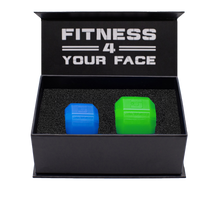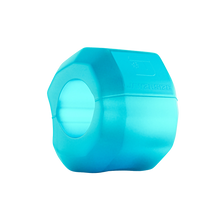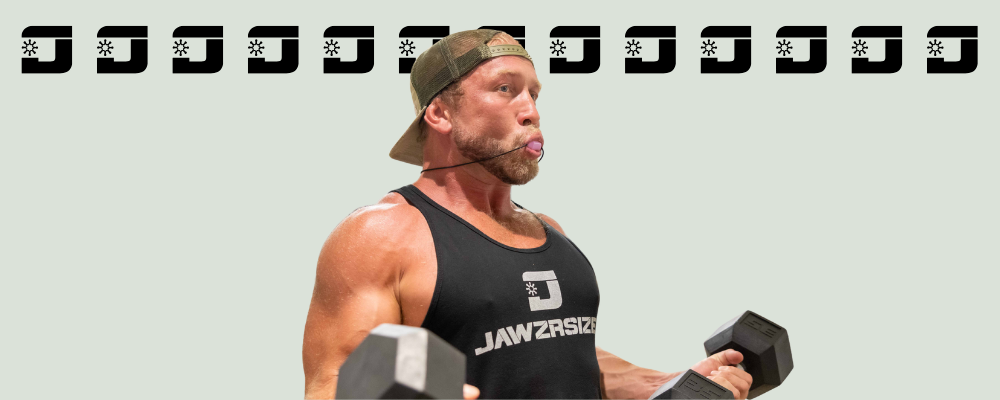Do you even know what the masseter muscle is? You’re not alone if you have no idea what this is, nor heard of it. What’s interesting is it’s a muscle you don’t even realize you use daily! Given all the work it does, it can be stressed and overworked, which can then cause painful problems.
Let’s learn about the masseter muscle, why it’s important and how you can prevent problems before they occur.
What is the Masseter Muscle?
Whenever you chew something, you use the masseter muscle. You also use this muscle when you clench your jaw or grind your teeth. This powerful muscle is one of the body's four muscles responsible for mastication, aka chewing. It is the body's primary chewing muscle and connects the lower jaw to the cheekbone.
The masseter muscle works with the temporalis, medial pterygoid and lateral pterygoid muscles by opening and closing your jaw when you are chewing. That’s right, there’s a whole bunch of muscles you may never knew existed… When the masseter contracts, it generates a powerful force that causes the lower top open and close the mouth.

Based on its weight, the masseter is the body's strongest muscle. When all the jaw muscles work together the average person's jaw muscle strength has a force of up to 150 pounds!
So where is this forceful muscle? You can quickly locate it by clenching your teeth. Collectively, these muscles covers the sides of your jaw behind your cheeks. The bulges between the cheekbone and the angle of the jaw are the grouping of masseter muscles.
What Are the Functions of the Masseter Muscle?
The masseter muscle's primary function is to elevate your jawbone, allowing your teeth to open and close together in a chewing motion. The temporalis, medial pterygoid and lateral pterygoid muscles work together to assist the masseter in doing its job. Anytime you’re chewing you're chewing, your masseter is hard at work.

This muscle two divisions: superficial and deep. The masseter's superficial fibers cause your jaw to protrude, bringing it forward into an underbite position. It covers the deep part of the muscle, extending to the lower part of the jaw.
The masseter's deep and intermediate fibers consist of vertically directed muscle fibers that work together to retract your jawbone, bringing your teeth into an overbite position. The movements of the superficial and deep fibers bring your teeth together in a chewing motion.
The vital function of the masseter muscle's deepest fibers is to stabilize your temporomandibular joint (TMJ). This joint connects the jawbone to the skull. When your teeth are clenched, the masseter muscle contracts to keep your TMJ in the right place.
How To Exercise the Masseter Muscle

Although often overlooked, the masseter is one of the body's most important muscles. Like all of your body's muscles, you can strengthen the masseter muscle through exercise. The more you use your masseter muscle, the stronger it'll become. One benefit of masseter muscle exercise is a tighter, more attractive jawline.
Beyond cosmetic reasons, exercising the masseter muscle helps reduce jaw pain. You may experience jaw pain from repeatedly clenching or grinding your teeth. Certain health conditions may inhibit masseter muscle function, including arthritis, stress that causes a person to jaw muscles, and dislocating the jaw.
Mouth Opening Exercise
- Open your mouth slowly as widely as possible
- Look straight ahead while taking turns opening and closing your mouth
- Complete 3 sets of 10 reps several times a day
To make this exercise more challenging, use your fingers to add resistance by placing your fingers underneath your chin as you open and close your mouth.
Jaw Relaxation Exercise
- Touch your tongue to the roof of your mouth behind your upper front teeth
- Open and close your mouth while your tongue remains in the same position
- Repeat several times
Jaw Clench Exercise
- Open your jaw wide
- Slowly close your jaw while focusing on stretching and tightening your jaw muscles
- When you first start doing this exercise, hold your mouth closed for a few seconds
- As you get used to the exercise, hold your jaw together for 30 seconds or longer
Take care not to grind your teeth during this exercise. You can use a jaw workout device to add resistance while doing this exercise. Using a device will require more force than clenching alone but will also result in an even stronger jaw.
"M" Sound Exercise
- Relaxing your shoulders and lower jaw, keep your jaw relaxed throughout the exercise
- Close your mouth, relax your tongue, and make an "M" sound Move your lower jaw up and down and left to right without touching your teeth
- Open your mouth as wide as you can, then move your jaw left to right
- Do at least 10 reps of this exercise
Final Thoughts

The masseter muscle is one of your body's most important muscles. We use our masseter muscle every time we engage in the act of chewing. This muscle generates a significant amount of force, making it the strongest muscle in our body. However, we often don't pay attention to the masseter muscles until we are experiencing pain.
Your masseter muscle is trainable, just like the other muscles in your body, and just like those other muscles, exercise will strengthen the masseter — Doing so will likely change the appearance of your jawline to be stronger, which most people find more desirable.







